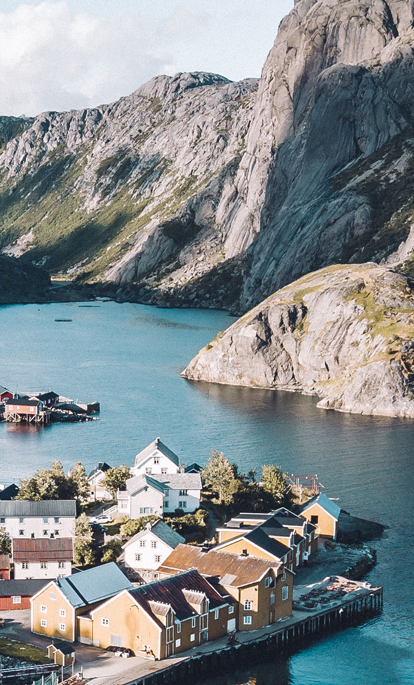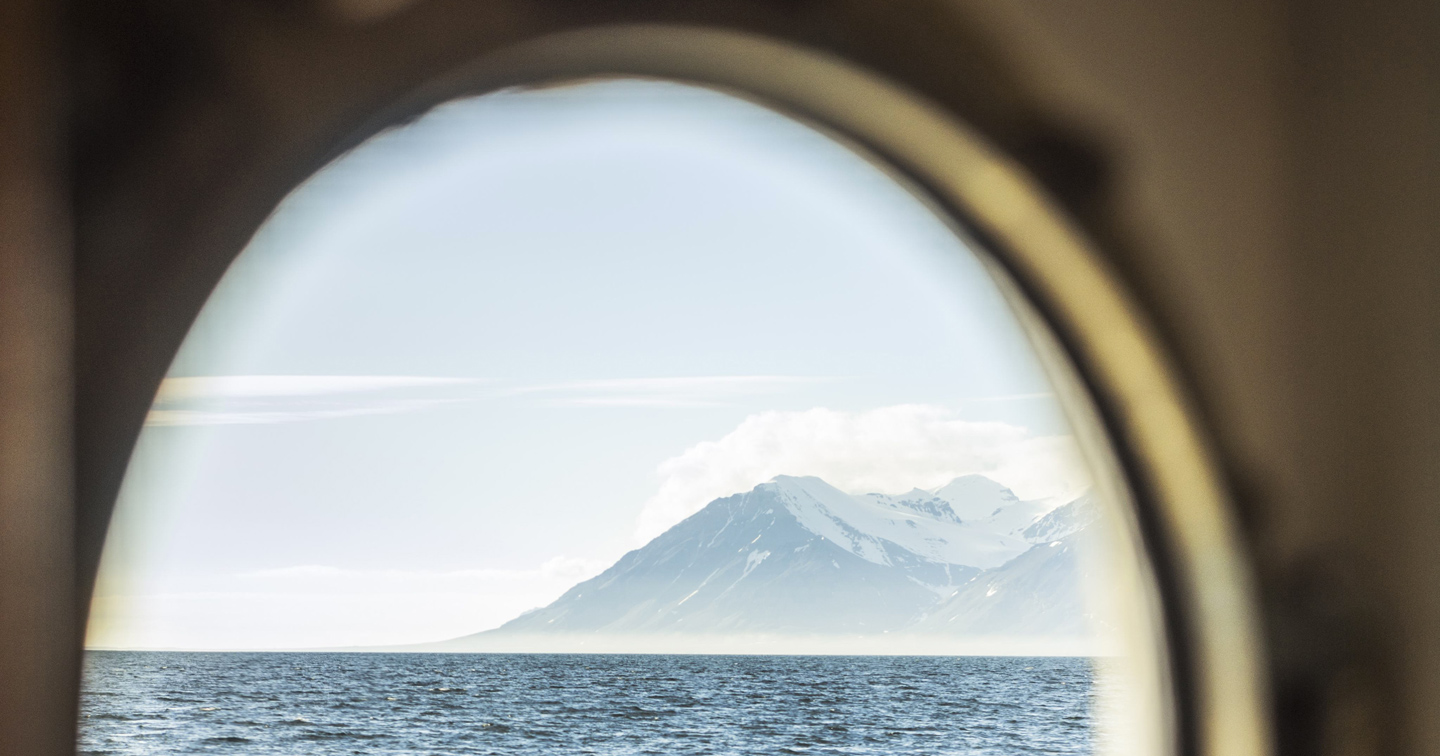
A few suggestions to get the holiday planning process started

Norway’s majestic fjords, verdant valleys and wild isles offer something special in every season, so it’s easy to see why our team are so passionate about the country. Using their expertise to tailor every trip, you could enjoy mushing a team of huskies, fishing for dinner in the Lofoten Islands, taking part in a local cooking class, and much more. We can advise the most scenic driving routes, tips for avoiding crowds and the best spots to admire Norway’s beauty, be it a cosy fisherman’s rorbu or Scandi-style hotel. The weather can change quickly, but our fantastic Concierges will ensure everything runs smoothly, regardless.
ENQUIRE NOWDiscover different ways to explore Norway
Practical advice and inspiration to help you prepare for your holiday
Whether you fancy the fjords, an Arctic adventure or an island-hopping road trip, our consultants know exactly where to recommend. We've spent a lot of time exploring and can steer you towards the country's spellbinding scenery and away from the hordes at hotspots like the Flam Railway (where we’d advise you to book a one-way trip and cycle back). Our team is brimming with useful tips and tricks, like how to avoid high car hire fees and where to eat in tiny towns; while our excellent Concierges are just a WhatsApp away, anticipating your needs and offering insider intel to enhance your Norway holiday.

Mighty fjordlands and dramatic coastline. In Norway’s craggy northwest, the long blue waters of the Vestfjord are often graced with orcas while the Lofoten Islands archipelago, adorned with painted fishing villages, sheltered bays and dramatic peaks (perfect for the Instagram feed), exudes rugged beauty. Beyond the Arctic Circle, admire Lysefjord from the famous Preikestolen cliff, teetering at 1,982ft (those with vertigo beware) as well as UNESCO-listed Geirangerfjord, one of the world’s most picturesque inlets with its dwarfing mountains and wild waterfalls.
Norway holidays are perfect for families. Spend a weekend in Oslo canoeing on the surrounding lakes, inspecting Viking ships up close in the Viking Ship Museum and meeting the farm animals at 18th-century Bogstad Manor. If you have more time on your Norway family holiday, children can re-enact Disney’s ‘Frozen’ on the grand fjords, to the backdrop of magical waterfalls and wildlife. Alternatively, if you're the type who might like to ski by boat or take a snowmobile safari through polar bear country, you've come to the right place. Original Travel can arrange tailor-made adventure trips to the fjords of western Norway and the Arctic island archipelago of Svalbard, both of which major in big, bold scenery. The fjord region is, quite simply, one of the most dramatic destinations anywhere in the world, while Spitsbergen, the main island in Svalbard, is a frozen landscape of glaciers, mountains and fjords full of blue icebergs – think the Scottish Highlands during an Ice Age with added polar bears and you'll get the picture.
We recommend travelling the country in a hire car, so that you can linger or roam as you please during your trip.
Armed with our top tips and little black book, there’s no shortage of activities. But before you set off to more rural pastures, Oslo offers a wealth of cultural treats. For an art-filled break, spend the weekend in Oslo, admiring world famous works by Edvard Munch in the dedicated Munch Museum. You can see his most famous painting, ‘The Scream’, in the National Gallery alongside works by El Greco and Pablo Picasso. Don’t miss a concert at the University of Oslo Aula, if only to admire its decoration – Munch himself was commissioned to decorate its large walls in 1914. Then stroll the Grunerlokka neighbourhood where the artist grew up and whose residences remain unchanged since the 19th-century. Today the neighbourhood still retains its creative streak with cool coffee culture and shopping scenes. Start at Munch’s first address, Thorvald Meyers gate 48, then follow the timeline to Fossveien 7 where his beloved sister (and possible inspiration for The Scream) died of tuberculosis. Meanwhile, fill in the gaps embracing your inner hipster, dipping into achingly cool Scandi shops, sipping on cocktails in a trendy neighbourhood haunt come night time and dining on inventive tapas.
Aside from a Munch-inspired tour, we can easily sweep you through the city’s highlights, including the Royal Palace, Stortinget (Norway’s parliament), the National Theatre and the Akershus Fortress (which was the inspiration for the castle in Disney’s ‘Frozen’, so is a must-visit for anyone with children in tow). Not to mention some world-class museums and standout restaurants – naturally we’ll reserve the best tables in advance. Along with dining in some world-class establishments, take part in the country’s taco-eating tradition. The Friday night event (called ‘Fredagstaco’) has become a cultural phenomenon, whereby families sit down to eat together and share the Mexican dish.
Spend a long weekend in the Norwegian fjordlands in a traditional lafta (interlocking log) style lodge or a more contemporary style hotel immersed in nature. Kayak along the rivers without another person in sight and see extraordinary wildlife such as lynx, wolves and reindeer during a trip to the Langedrak Nature Park. Birdwatching is popular activity while visiting the Svalbard archipelago, a region characterised by ice caves and mountains, and around 30% of the world’s Atlantic puffins reside in Norwegian territory (a species which is instantly recognisable thanks to their colourful beaks). For those in search of a winter wonderland, the Valdres region (located just a few hours from Oslo by car), is filled with frozen lakes and snow-dusted forests. Here you can ski, snowshoe and experience what it’s like to be a musher with dog-sledding through the snow-clad landscape. Warm-up in between activities with rejuvenating spa treatments, sauna sessions and cosying up in front of your hotel’s fire.
Undoubtedly one of the most magical experiences in Norway is the chance to spot the elusive Northern Lights, and Tromsø, a city situated above the Arctic Circle in northern Norway, is an excellent place to see them from. Plan your trip between October and April to optimise your opportunity to catch sight of the iconic Aurora Borealis. Our travel experts can help design your tailor-made itinerary to incorporate this dazzling natural phenomenon.
Despite its high latitude, Norway experiences a fairly temperate climate, and the coast is also blessed with relatively warm weather thanks to the Gulf Stream. Unfortunately, the weather can still be quite variable across the country and there are periods of heavy rainfall. Temperatures range from up to 30°C in summer and as low as -40°C in some remote areas during the winter. Unlike the rest of Scandinavia, however, winter is not the country’s only season and the surrounding sea isn’t frozen. In Oslo and Bergen, temperatures climb to around 20°C during summer and drop below 0°C in the winter months. The northern position of the Lofoten Islands means that the North Atlantic Drift, Norwegian Current and Gulf Stream all influence the climate here, although surprisingly both summer and winter are fairly mild. Finnmark, located in Norwegian Lapland, is one of the country’s coldest regions and has reached a record cold temperature of -51.4°C in Karasjok. Visit our guide page on the best time to travel to Norway for more information.

Our team of destination experts will get to know you and your unique requirements for your holiday

We work with you to build an ultra-personalised holiday itinerary with your choice of accommodation, experiences and activities

All of our holidays include little extras designed to make a big difference to your trip, from fast-tracking you through airport check-in and security to our network of local Concierges